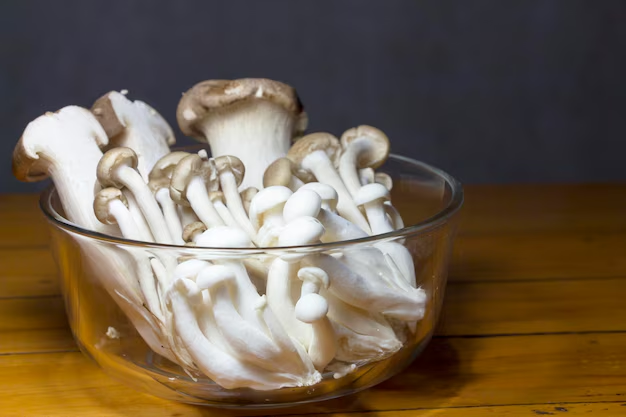The Ultimate Guide to Keep Mushrooms Fresh in Your Refrigerator 🍄
Mushrooms are a versatile and delightful ingredient in many dishes, adding flavor and texture that can elevate even the simplest of meals. But keeping mushrooms fresh can be tricky, especially if you’ve ever found a slimy, unrecognizable mass in your fridge drawer. Let’s delve into everything you need to know to maintain your mushrooms’ fresh, firm, and flavorful state for as long as possible.
Understanding Mushrooms: The Basics
Mushrooms are fungi, not plants, which means they have unique storage needs. Whether you use them in a robust stew or a light salad, maintaining their freshness is vital to ensuring their quality and taste. Here’s what you should know:
Why Do Mushrooms Spoil?
- Moisture: Mushrooms contain a high water content. When stored improperly, they can become slimy and moldy.
- Airflow: Lack of proper airflow can exacerbate moisture build-up.
- Temperature: Mushrooms should be chilled but not frozen, as extreme cold can damage their texture.
The Do’s and Don’ts of Storing Mushrooms
Knowing the right (and wrong) ways to store mushrooms is crucial. Below are specific strategies:
Do’s:
- Use Paper Bags: Store mushrooms in a paper bag to absorb excess moisture. Unlike plastic, paper allows for better air circulation.
- Refrigerate Promptly: Keep them in the refrigerator’s crisper drawer where humidity levels are best regulated.
- Keep Them Whole: Store mushrooms whole until ready to use to prolong freshness.
- Separate from Other Produce: Keep mushrooms away from ethylene-producing fruits like apples or bananas, which can speed up spoilage.
Don’ts:
- Avoid Plastic Bags: These trap moisture, which can make mushrooms slimy.
- Don’t Wash Before Storing: Mushrooms should only be cleaned before use, as washing can add unnecessary moisture.
- Avoid Sealed Containers: Much like plastic bags, sealed containers can cause moisture accumulation.
How to Store Different Types of Mushrooms
Given that there are various types of mushrooms, each can have slight nuances in storage requirements.
Button and Cremini Mushrooms
- Best Practice: Store in a paper bag in the refrigerator. They can last up to 10 days if kept properly.
Portobello Mushrooms
- Best Practice: Similar to button mushrooms, but they are sturdier, so they can be placed on a dry towel on a baking sheet for easy air circulation.
Shiitake Mushrooms
- Best Practice: Store shiitake mushrooms in a loosely closed paper bag to allow them to breathe.
Specialty Mushrooms (e.g., Oyster, Maitake)
- Best Practice: Wrap them in a paper towel and place inside a paper bag. Consume these within a week for optimal freshness.
Tips to Extend Mushroom Shelf Life
Given the love for mushrooms, wasting them is a tragedy no cook wants. Here are ways to extend their shelf life:
Freezing Mushrooms
- Preparation: Steam or sauté mushrooms before freezing to maintain texture.
- Storage: Place cooked mushrooms in an airtight container or vacuum-sealed bag, ensuring as little air as possible remains.
Drying Mushrooms
- Method: You can dehydrate mushrooms with a food dehydrator or oven.
- Rehydration: Simply soak dried mushrooms in warm water before use to rehydrate.
Pickling Mushrooms
- Advantage: Pickling not only extends the life of mushrooms but also adds a delightful tangy flavor.
- Storage: Store in a cool, dark place to maintain quality.
Common Myths About Mushroom Storage
Myth 1: All Mushrooms Can Be Stored the Same Way
- Truth: Different types have varying moisture levels and textures; therefore, they require slightly adjusted storage methods for best results.
Myth 2: Mushrooms Must be Washed Before Storage
- Truth: Washing mushrooms before storage increases moisture content, hastening spoilage.
Myth 3: Plastic is Fine for Mushrooms
- Truth: While convenient and used widely, plastic retains moisture and can cause mushrooms to become mushy and spoil faster.
In Your Kitchen: Practical Steps for Mushroom Storage
Step-by-step Storage Process:
- Select Fresh Mushrooms: Begin by choosing fresh mushrooms that are firm to the touch, without any visible dark spots or slime.
- Unpack Immediately: Once home, remove mushrooms from any plastic wrapping.
- Choose a Proper Container: Use a paper bag or wrap mushrooms in a paper towel and then into a breathable bag.
- Refrigerate Right Away: Place them in the crisper drawer for ideal storage conditions.
- Check Regularly: Examine mushrooms periodically to ensure they haven’t become overly moist or started to spoil.
Quick Summary: Keep Mushrooms Fresh with These Key Tips!
Here’s a concise guide to reference for maintaining mushroom freshness:
| Tip 📝 | Action to Take 📌 |
|---|---|
| Store in Paper Bags | Absorb moisture and allow air circulation. |
| Refrigerate Promptly | Use the crisper drawer for best results. |
| Avoid Washing Before Storing | Clean only when you are ready to cook. |
| Separate from Ethylene Producers | Keep away from fruits like apples. |
| For Long-Term Storage: | Freeze or dry mushrooms for extended use. |
A Fresh Approach to a Common Ingredient
By understanding mushroom storage, you’re not only cutting down on waste but enhancing your culinary creations with ingredients that are fresh and truly zestful. Taking steps to properly store mushrooms not only saves you money but also provides the peace of mind that you’re nurturing the best flavors in your dishes.
Incorporate these techniques into your routine, and you'll never have to worry about finding unappealing, spoiled fungi in your fridge again. Happy cooking! 🍳
